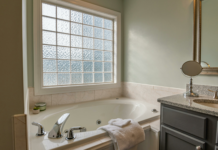Duxbury Grey: Discover The Stunning Charm Behind This Unique Shade
Have you ever wondered what makes Duxbury Grey stand out in the vast world of interior design and paint colours? This captivating shade isn’t just another grey on the palette – it’s a sophisticated, timeless hue that’s taking the design community by storm. In this article, we’ll uncover the stunning charm of Duxbury Grey, exploring why it’s become a favourite among homeowners, decorators, and architects alike. Curious about how this unique shade can transform your living space? Keep reading to find out!
Duxbury Grey is far more than a simple colour choice; it’s a statement of elegance and versatility. Perfect for both modern and traditional interiors, this shade strikes a delicate balance between warm and cool tones, making it incredibly adaptable. Whether you’re refreshing your walls, selecting the perfect exterior paint, or searching for that ideal neutral tone, Duxbury Grey paint colours offer a nuanced depth that few other greys can match. But what exactly sets it apart? Is it the subtle undertones or the way it complements natural light? These are just some of the questions we’ll answer.
In today’s design trends, where neutral paint colours dominate, Duxbury Grey shines brightly as a top contender. It pairs beautifully with bold colours, natural wood finishes, and minimalist decor, making it a versatile choice for any project. Looking to add a touch of understated luxury to your home? The enchanting allure of Duxbury Grey might be exactly what you need to elevate your space effortlessly. Let’s dive deeper and discover why this unique shade is becoming the go-to colour for designers and homeowners alike.
What Makes Duxbury Grey a Timeless Classic in British Interior Design?
What Makes Duxbury Grey a Timeless Classic in British Interior Design?
When thinking about British interior design, one colour keeps popping up again and again – Duxbury Grey. It’s not just another shade of grey, but a hue that seems to bring a whole room together with its subtle charm and versatility. So, what makes Duxbury Grey a timeless classic? Let’s dive into the story behind this unique shade and find out why it continues to captivate designers and homeowners alike.
Duxbury Grey: Discover The Stunning Charm Behind This Unique Shade
Duxbury Grey is a warm grey tone with soft undertones that make it adaptable to many different styles. Unlike colder greys that sometimes feel sterile or harsh, Duxbury Grey has a gentle warmth which adds character without overpowering a space. This quality makes it especially popular in British homes where the aim often is to balance tradition with modern comfort.
One thing that might surprise you is that Duxbury Grey isn’t a brand new invention. Its roots trace back to the early 20th century when British interior designers sought colours that reflected the muted tones of the English countryside. This shade offers a middle ground between darker charcoals and lighter greys, making it the perfect canvas to build a room’s look around.
Why Duxbury Grey Stands Out in British Interiors
There are many reasons why this colour has become a staple in British homes, but here are few of the most important ones:
- Versatility: It works wonders in various rooms, from kitchens to bedrooms, living rooms or even bathrooms.
- Timelessness: Unlike trendy colours which come and go, Duxbury Grey has a classic appeal that doesn’t dating quickly.
- Compatibility: It pairs well with both warm and cool tones, which allows for more freedom in decorating choices.
- Light Reflection: The shade plays beautifully with natural and artificial light, changing subtly throughout the day.
Historical Context: How Duxbury Grey Became Popular
British interiors have often been influenced by the country’s rich history and landscape. After the industrial revolution, there was a shift towards more practical and understated colours in homes, moving away from the ornate and bright patterns of Victorian times. Duxbury Grey emerged as a perfect response to this new preference for simplicity and elegance.
In the mid-20th century, many British designers started embracing this colour for its neutrality and calming effect. It was seen as a way to modernise interiors without losing the essence of British heritage. Over the years, its popularity only grew, cementing its place in both traditional and contemporary design schemes.
Comparing Duxbury Grey With Other Popular Greys
To better understand why Duxbury Grey is so special, it helps to compare it with other well-known grey shades:
| Shade Name | Undertones | Best Used In | Feel and Atmosphere |
|---|---|---|---|
| Duxbury Grey | Warm, soft beige | Living rooms, kitchens | Cozy, inviting, timeless |
| London Grey | Cool, bluish | Offices, bathrooms | Crisp, modern, clean |
| French Grey | Neutral, slight green | Bedrooms, lounges | Calm, natural, serene |
| Elephant Grey | Dark, warm brown | Feature walls | Strong, sophisticated |
As you can see, Duxbury Grey’s warmth and softness set it apart from cooler or darker greys, making it more approachable and easier to live with in everyday life.
Practical Examples of Using Duxbury Grey in Interiors
Many designers and homeowners have used Duxbury Grey in creative ways:
- Kitchen Cabinets: Painting kitchen cabinetry in Duxbury Grey creates a timeless focal point that works with wooden floors or marble counters.
- Living Room Walls: The shade provides a neutral backdrop that allows colourful art pieces or bold furniture to pop.
- Furniture Upholstery: Sofas or armchairs in Duxbury Grey fabric add understated elegance without dominating a space.
- Bathroom Tiles: When paired with white fixtures, this colour adds a touch of warmth to typically cold spaces.
- Accents and Accessories: Cushions, curtains, or rugs in Duxbury Grey complement a variety of colour palettes without clashing.
How to Pair Duxbury Grey for Maximum Effect
Pairing colours with Duxbury Grey is quite fun because it’s so flexible. Here’s a quick rundown:
- Warm tones like mustard yellow, terracotta, or blush pink bring out the cosy aspect of the shade.
- Cooler colours such as navy blue, emerald green, or soft lavender create a sophisticated contrast.
- Natural materials like oak, rattan, and linen work beautifully to enhance the organic feel.
- Metallic accents in brass or copper add a touch of luxury without overwhelming the subtlety.
The Lasting Appeal
Top 7 Stunning Ways to Incorporate Duxbury Grey in Your Home Decor
When it comes to home decor, choosing the right colour can be both exciting and overwhelming. One shade that’s been gaining traction recently is Duxbury Grey. It’s not just any grey; it has this unique charm that sets it apart from the usual dull tones. If you haven’t heard of Duxbury Grey before, you might be missing out on a colour that could completely transform your living space. Whether you’re repainting your walls or just picking accent pieces, Duxbury Grey offers a subtle sophistication that’s hard to beat.
Duxbury Grey: Discover The Stunning Charm Behind This Unique Shade
Originating from Benjamin Moore’s palette, Duxbury Grey (often referenced as HC-156) is a soft, muted grey with blue undertones. Unlike other greys that might look cold or stark, Duxbury Grey has a warmth to it that makes a room feel inviting yet modern. It’s a colour that adapts well to different lighting conditions, sometimes appearing more blue, other times leaning towards green or taupe, depending on the time of day and the room’s natural light.
Historically, grey shades have been associated with neutrality and balance, but Duxbury Grey breaks the mould by giving a hint of colour while maintaining that calming neutrality. This versatility makes it ideal for various interior styles, from coastal cottages to urban lofts.
Top 7 Stunning Ways to Incorporate Duxbury Grey in Your Home Decor
-
Paint Your Walls with Duxbury Grey
Using Duxbury Grey on your walls creates a serene backdrop that complements almost any furniture style. It works great in living rooms and bedrooms where you want a relaxing vibe but don’t want the space to feel boring or flat. Pair it with white trims and natural wood furniture for a timeless look. -
Accent Furniture Pieces
If painting whole walls sounds too much, try incorporating Duxbury Grey through furniture like armchairs, cabinets, or side tables. A velvet armchair in this shade can be a statement piece, adding texture and depth to your room without overpowering it. -
Combine with Bold Colours for Contrast
Duxbury Grey pairs beautifully with bolder colours such as mustard yellow, navy blue, or deep green. Using cushions, rugs, or artwork in these hues alongside Duxbury Grey walls or furnishings adds an unexpected burst of energy and personality. -
Kitchen Cabinets with a Twist
Kitchen cabinetry painted in Duxbury Grey can bring a fresh yet classic feel. It’s different from the usual white or black kitchens and adds a subtle colour that still feels neutral enough to not clash with countertops or appliances. -
Use in Bathrooms for Spa-Like Ambience
Bathrooms painted or tiled in Duxbury Grey create a calming, spa-like atmosphere. The soft tone helps reflect light without being harsh, perfect if you want a soothing space to unwind. -
Decorative Textiles and Accessories
Incorporate Duxbury Grey through cushions, throws, rugs, or curtains. These smaller touches are easy to change over time and can help tie a room together if your main colour palette is neutral. -
Create Contrast with White or Cream Mouldings
Using Duxbury Grey on walls or ceilings paired with white or cream mouldings adds architectural interest. This approach highlights room details and gives a polished, sophisticated finish.
Why Choose Duxbury Grey Over Other Greys?
It’s easy to get lost in the sea of grey paint options available today. Here’s why Duxbury Grey stands out:
- Versatility: Works well in different room types and styles.
- Warmth: Unlike some greys that feel cold and uninviting, Duxbury Grey has a cozy undertone.
- Light Adaptability: Changes subtly with lighting which keeps rooms feeling dynamic.
- Timelessness: It’s a shade that won’t go out of style quickly.
A Quick Comparison Table: Duxbury Grey vs. Other Popular Greys
| Feature | Duxbury Grey | Classic Grey | Cool Grey | Warm Grey |
|---|---|---|---|---|
| Undertones | Blue-green subtle | Neutral | Blue | Beige |
| Warmth | Medium warmth | Neutral | Cool | Warm |
| Best Use | Walls, furniture, trim | Walls | Modern spaces | Traditional interiors |
| Light Adaptability | High | Medium | Medium | Low |
| Popularity | Rising star | Very common | Popular in modern decor | Less common |
Practical Tips for Using Duxbury Grey in Your New York Home
- If you live in a small apartment in New York where natural light might be limited,
How Duxbury Grey Enhances Natural Light: Expert Tips for British Homes
Duxbury Grey has been gaining attention in the world of interior design, especially in British homes where natural light and subtle colours are highly appreciated. This unique shade, neither too dark nor too light, offers a fresh way to enhance the natural light in any room. But what makes Duxbury Grey so special, and how can you use it effectively in your home? Let’s dive into the charm and practical uses of this distinctive colour.
What is Duxbury Grey? Discover The Stunning Charm Behind This Unique Shade
Duxbury Grey is a muted, soft grey with slight blue undertones. It sits somewhere between traditional grey and blue, which makes it versatile for many different interior styles. Unlike harsh, industrial greys or overly warm greys, Duxbury Grey strikes a balance that feels both calming and uplifting. It has roots in the historic colour palettes used in British coastal homes, where the mix of sea and sky inspired such hues.
- Originally inspired by the seaside town of Duxbury in Massachusetts, the colour was adapted for British tastes.
- It is often described as having a “stormy sky” vibe, perfect for creating a cosy yet airy atmosphere.
- The shade works well with both modern and classic décor, blending effortlessly with wood, white trims, and brass accents.
Because of its slight blue undertone, Duxbury Grey can sometimes look cooler or warmer depending on the lighting and surroundings, making it a dynamic choice for interiors.
How Duxbury Grey Enhances Natural Light in British Homes
Natural light is hugely important in British homes, where overcast skies and limited sunshine hours are common. Choosing the right paint colour can make a massive difference in how light is perceived indoors. Duxbury Grey, with its reflective yet soft quality, helps to brighten spaces without making them feel too clinical or cold.
Here’s how it works:
- Reflects natural light well: The subtle blue undertones of Duxbury Grey bounce light around the room, increasing brightness.
- Creates depth: Unlike plain whites or cream, this grey adds a layer of depth that prevents rooms from looking flat.
- Balances warmth and coolness: It doesn’t absorb too much light like darker colours would, but also avoids the glare sometimes caused by pure white walls.
- Works with different light types: Whether direct sunlight or diffused daylight, Duxbury Grey adapts and reflects light differently, making rooms feel alive.
Expert Tips for Using Duxbury Grey in Your Home
If you want to bring the benefits of Duxbury Grey into your space, here some practical ideas to start with. These tips are based on expert advice and real-world experiences from interior designers who worked with this shade.
- Pair with white trims and ceilings: This creates a clean contrast that enhances the colour’s brightness.
- Use in living rooms and bedrooms: These are spaces where you want a calming but uplifting atmosphere.
- Combine with natural materials: Think oak furniture, rattan baskets, or linen fabrics to add texture and warmth.
- Add pops of colour: Mustard yellow, blush pink, or navy blue accessories complement Duxbury Grey beautifully.
- Consider the direction of your windows: North-facing rooms tend to have cooler light, so Duxbury Grey will look bluer, whereas south-facing rooms may warm it up slightly.
- Test before painting: Always try samples on different walls and observe at different times of day to see how the colour changes.
Comparing Duxbury Grey to Other Popular Greys and Blues
To understand why Duxbury Grey stands out, it helps to compare it with other similar colours. Here’s a simple comparison table:
| Colour Name | Undertones | Best Used In | Light Reflection | Mood Created |
|---|---|---|---|---|
| Duxbury Grey | Blue-Grey | Living rooms, bedrooms | Moderate to High | Calm, sophisticated |
| Classic Grey | Neutral Grey | Office, kitchens | Moderate | Neutral, professional |
| Steel Blue | Strong Blue | Bathrooms, accents | High | Fresh, vibrant |
| Warm Dove Grey | Warm Beige Grey | Hallways, lounges | Moderate | Cozy, inviting |
As you can see, Duxbury Grey offers a unique balance, making it more versatile than some greys that lean too warm or too cold.
Practical Example: Using Duxbury Grey in a Typical British Home
Imagine a sitting room in a Victorian terrace in London. The space has large sash windows, but the light is often muted due to nearby buildings and the direction they face. Painting the walls in Duxbury Grey could transform the room by reflecting the available light and making the room feel bigger and more open.
You might:
- Paint the walls entirely in Duxbury Grey.
- Use crisp white paint for
The Ultimate Guide to Pairing Duxbury Grey with Complementary Colours
The Ultimate Guide to Pairing Duxbury Grey with Complementary Colours
In the bustling streets of New York, where style meets innovation, colour choices in home decor and fashion always matter. One particular shade that’s been catching eyes lately is Duxbury Grey. This unique tint, which is often mistaken for a simple grey, actually holds a charm that’s both subtle and striking. You might wonder what makes Duxbury Grey so special? And how do you pair it with colours that bring out its best qualities? Well, let’s dive right into it and uncover what makes Duxbury Grey a remarkable choice and how you can complement it perfectly.
Duxbury Grey: Discover The Stunning Charm Behind This Unique Shade
Duxbury Grey isn’t your usual dull grey. It’s a soft, warm colour with a slight blue undertone that gives it a depth rarely seen in standard greys. This shade has roots in historical New England architecture, particularly in the town of Duxbury, Massachusetts, where many colonial homes were painted in this hue. It evokes a sense of calm sophistication, making it ideal for both modern and vintage settings.
Here’s a quick breakdown of what defines Duxbury Grey:
- Warm undertones mixed with subtle blues
- Balanced between light and medium grey
- Works well in natural light and artificial lighting
- Versatile enough for walls, fabrics, and even furniture
Because of its complexity, Duxbury Grey can change its appearance depend on the lighting conditions and surrounding colours, which is why matching it correctly is important.
Why Choosing Complementary Colours Matters
Colours, they don’t just exist alone; they interact, clash, or harmonise. Picking the right complementary colours with Duxbury Grey enhances the look of any space or outfit. When paired poorly, Duxbury Grey might look dull or washed out, but with the right partners, it becomes vibrant and inviting.
Complementary colours are those that sits opposite each other on the colour wheel, creating a visual tension that’s attractive. For Duxbury Grey, understanding its undertones helps in selecting these complementary hues.
Complementary Colours for Duxbury Grey
Because Duxbury Grey has blue undertones, colours from the warmer spectrum tend to balance it nicely. Here’s a list of colours that works well:
- Warm Beige: Adds a cosy, earthy feel
- Rich Mustard Yellow: Brings vibrancy and energy
- Burnt Orange: Offers a rustic, autumnal charm
- Soft Blush Pink: Introduces a gentle, romantic touch
- Deep Navy Blue: Creates a monochromatic yet dynamic palette
- Crisp White: Provides contrast and keeps things clean
Practical Examples of Pairing Duxbury Grey
Imagine a living room painted in Duxbury Grey. You might want to add cushions or throws in warm beige or blush pink to soften the space. For a bolder look, an accent chair in burnt orange or mustard yellow could really pop. In fashion, pairing a Duxbury Grey blazer with a white shirt and navy trousers creates a smart, timeless outfit.
Table: Colour Pairings with Duxbury Grey and Their Effects
| Colour | Effect | Best Used In |
|---|---|---|
| Warm Beige | Cosy, inviting | Living rooms, bedrooms |
| Rich Mustard Yellow | Energetic, vibrant | Accents, cushions, accessories |
| Burnt Orange | Rustic, warm | Accent walls, furniture |
| Soft Blush Pink | Romantic, gentle | Bedrooms, soft furnishings |
| Deep Navy Blue | Sophisticated, dynamic | Formal wear, offices |
| Crisp White | Clean, fresh | Kitchens, bathrooms, trim |
How Duxbury Grey Compares to Other Popular Greys
Not all greys are created equal. Compared to colder greys like ‘Charcoal’ or ‘Slate’, Duxbury Grey feels warmer and more approachable. Unlike stark greys, which sometimes feel clinical or harsh, Duxbury Grey has a softness that makes spaces feel more lived-in and comforting.
Here’s a quick comparison:
- Duxbury Grey vs Charcoal: Duxbury is lighter and warmer; Charcoal is darker and cooler.
- Duxbury Grey vs Slate: Slate is bluer and can feel colder; Duxbury balances blue undertones with warmth.
- Duxbury Grey vs Classic Grey: Classic Grey tends to be neutral; Duxbury Grey leans towards a subtle blue warmth.
Tips for Using Duxbury Grey in New York Homes
Living in New York means dealing with varied lighting—big windows, artificial lights, sometimes limited natural light. Duxbury Grey can adapt well but you might need to consider:
- Use warmer complementary colours to avoid a cold atmosphere.
- Incorporate natural materials like wood or leather to add texture.
- Layer lighting sources to highlight the colour’s nuances
Why Duxbury Grey Is the Perfect Paint Shade for Modern British Kitchens
When it comes to choosing the right paint shade for a kitchen, many homeowners often find themselves overwhelmed by the endless options. But one colour that has been quietly gaining popularity, especially among modern British kitchens, is Duxbury Grey. This shade isn’t just another grey on the palette; it carries a unique charm that combines tradition with contemporary style. If you haven’t heard about Duxbury Grey before, you might be missing out on a paint shade that perfectly balances warmth and sophistication.
What is Duxbury Grey?
Duxbury Grey is a paint colour originally created by Benjamin Moore, a renowned American paint company. It’s a warm grey with subtle green undertones, which gives it a fresh but cosy feel. Unlike colder greys that can feel stark or clinical, Duxbury Grey manages to feel inviting, making it ideal for spaces where people gather, like kitchens.
- Colour code: Benjamin Moore HC-115
- Undertones: Green with a hint of blue
- Light reflectance: Moderate, allowing it to look different depending on lighting conditions
This shade has a chameleon-like quality; it changes appearance slightly depending on the time of day and the type of light present. For example, in natural daylight, it might appear more greenish-grey, whereas under warm artificial light, it tends to look more beige or taupe. This variability makes it a versatile choice for many kitchen designs.
Historical Roots and Why It Matters
The name Duxbury Grey comes from Duxbury, Massachusetts, a historic town known for its colonial architecture and coastal charm. The colour was inspired by the classic New England homes’ muted, weathered tones, which have stood the test of time. British kitchens, especially modern ones, often seek to blend old-world charm with new trends, and Duxbury Grey fits into this perfectly.
In the UK, the popularity of muted, earthy colours in kitchen design has grown over the last decade. British homeowners and designers have moved away from harsh whites and bright colours, favouring instead shades that evoke calm and comfort. Duxbury Grey’s soft yet complex nature makes it a great candidate for this evolving aesthetic.
Why Duxbury Grey is Perfect for Modern British Kitchens
Modern British kitchens often blend functionality with style, seeking to create spaces that are both practical and visually appealing. Duxbury Grey ticks many of these boxes:
- Neutral but not boring: Unlike plain grey, Duxbury Grey has warm undertones that add depth.
- Pairs well with natural materials: Works beautifully with wooden countertops, marble surfaces, and brass fixtures.
- Timeless look: It doesn’t go out of style quickly, which is important for a space as central as a kitchen.
- Hides wear and tear: Lighter colours show stains and scratches more easily, but Duxbury Grey masks them better, making maintenance easier.
- Works with various lighting: Whether your kitchen has big windows or relies mostly on artificial lighting, this shade adapts well.
Comparisons: Duxbury Grey vs Other Popular Kitchen Colours
To understand why Duxbury Grey stands out, let’s compare it with other commonly used kitchen colours:
| Colour Name | Undertones | Best For | Drawbacks |
|---|---|---|---|
| Duxbury Grey | Green with blue | Warm, adaptable, natural materials | Slightly tricky to match with very bright colours |
| Light Grey | Cool, blue-grey | Modern, sleek | Can feel cold or clinical |
| Pale Blue | Blue | Coastal or cottage style kitchens | May clash with warmer wood tones |
| Cream | Yellow-beige | Traditional, warm kitchens | Shows dirt and stains easily |
| Charcoal Grey | Dark, neutral | Elegant, dramatic kitchens | Can make small kitchens feel cramped |
Duxbury Grey hits a middle ground, making it especially popular for kitchens that want a modern yet inviting feel.
Practical Ways to Use Duxbury Grey in Your Kitchen
You don’t have to paint the entire kitchen in Duxbury Grey to enjoy its benefits. Here are some practical tips for incorporating this shade:
- Cabinetry: Painting your kitchen cabinets Duxbury Grey can create a sophisticated backdrop for your space.
- Walls: Use the shade on walls if you want a muted colour that won’t overwhelm open-plan spaces.
- Accents: Try it on kitchen islands or shelving units for a pop of subtle colour.
- Pair with White: Combine Duxbury Grey with crisp white trims and ceilings to keep the space feeling fresh and bright.
- Hardware Choices: Brass or matte black handles and fixtures pair beautifully with Duxbury Grey cabinetry or walls.
Some Design Inspirations to Consider
If you’re wondering how Duxbury Grey looks in
Conclusion
Duxbury Grey stands out as a versatile and elegant choice for homeowners and designers alike, offering a timeless aesthetic that complements a variety of interior styles. Its subtle blend of cool and warm undertones allows it to adapt seamlessly to different lighting conditions, making spaces feel both inviting and sophisticated. Whether used on walls, cabinetry, or accent pieces, Duxbury Grey provides a neutral yet distinctive backdrop that enhances other colors and textures in a room. As trends continue to favor understated elegance and functional beauty, incorporating Duxbury Grey into your design palette can elevate your space with a refined, modern touch. For those looking to refresh their home or workspace, considering Duxbury Grey might be the perfect starting point to achieve a balanced and harmonious environment. Explore this shade further and experience how its unique charm can transform your interiors today.





